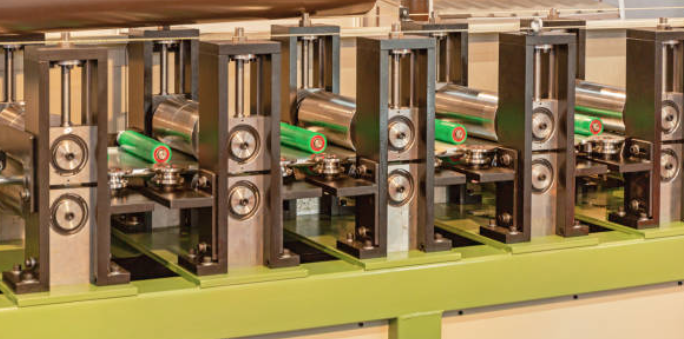
Posted on Saturday, October 12, 2024
As Argentina continues to develop its industrial landscape, roll forming technology is poised to play a significant role across various sectors. With increasing demand for efficiency, customization, and sustainability, several trends and innovations are shaping the future of roll forming in the country. Here are some key trends to watch:
The integration of automation into roll forming processes is revolutionizing production lines. As manufacturers in Argentina adopt smart technologies, such as the Internet of Things (IoT) and artificial intelligence (AI), they can optimize operations, reduce waste, and enhance product quality. Automated roll forming machines equipped with real-time monitoring systems will enable manufacturers to respond quickly to market demands and improve overall efficiency.
The need for customized products is on the rise in Argentina, especially in construction and automotive sectors. Roll forming technology allows manufacturers to create bespoke profiles tailored to specific customer requirements. With advancements in machine design, companies can quickly switch between different profiles, making it easier to cater to diverse client needs and enhancing competitiveness in the market.
As global awareness of environmental issues grows, Argentina is also focusing on sustainable practices in manufacturing. Roll forming technology is inherently efficient, producing minimal waste compared to traditional methods. The use of recycled materials and the development of energy-efficient machines are key trends that will likely gain momentum, helping manufacturers reduce their carbon footprint and meet the increasing demand for sustainable products.
Innovations in material science are expanding the possibilities for roll forming in Argentina. The use of high-strength steel and lightweight alloys not only improves the performance of roll-formed products but also contributes to energy efficiency in applications such as automotive and construction. As manufacturers experiment with new materials, they can create stronger, lighter, and more durable components, catering to evolving market demands.
Argentina's ongoing infrastructure projects and urban development initiatives are driving the demand for roll-formed products. Roll forming machines are essential for producing structural components like purlins, beams, and metal decking, which are critical for modern buildings. As the country invests in infrastructure, the roll forming industry will experience significant growth, providing opportunities for local manufacturers to expand their offerings.
The development of advanced roll forming machinery, including those with improved speed, precision, and ease of use, is a key trend. Features such as quick-change tooling systems and enhanced safety mechanisms are making it easier for manufacturers to optimize their production processes. Additionally, the incorporation of software solutions for design and simulation will allow for better planning and execution of roll forming projects.
With Argentina's strategic position in South America, roll forming manufacturers can tap into export markets across the region. As the demand for high-quality, locally produced metal components increases, companies that invest in advanced roll forming technology will be well-positioned to serve international markets, enhancing their growth prospects.
The future of roll forming technology in Argentina is bright, driven by trends such as automation, customization, sustainability, and advanced materials. As manufacturers embrace these innovations, they will not only improve their operational efficiencies but also enhance their competitiveness in both domestic and international markets. The roll forming industry is set to play a pivotal role in supporting Argentina’s growth across various sectors, particularly construction and automotive, positioning the country as a key player in the South American manufacturing landscape.

Understanding Coil IDs, Mandrel Sizing, and Shear Pin Safety in Uncoilers
Posted on Wednesday, October 1, 2025
Mismatched sizes can lead to machine damage, downtime, and safety hazards — often evidenced by a shear pin failure.

How Coil Tensile Strength Affects Roll Forming and How to Adjust Your Machine
Posted on Wednesday, October 1, 2025
Changes in tensile strength can significantly affect the finished profile, causing misaligned bends, uneven edges, and out-of-spec parts.

Why Paint Cracks on an Embossing Line Running Pre-Painted Coil and How to Prevent It
Posted on Wednesday, October 1, 2025
This issue not only affects the visual quality of the product but can also lead to increased scrap rates and customer complaints.

The Most Popular Standing Seam Metal Roof Panels in the U.S. — A Comprehensive Guide
Posted on Monday, September 29, 2025
In this post, we’ll explore what panel styles and sizes are most popular in the U.S